Surface from Boundary Curves#
Functionality#
This node generates a Surface object from exactly four Curve object, that define the boundary of the surface. For example, it can build a plane square from four edges of that square.
It is assumed that curves provided have the following properties:
They meet exactly at the corner points of the surface.
Their directions are orgainized so that the four curves build a cycle (either clockwise or counterclockwise).
That is, the second curve must begin at the point where the first curve ends; and the third curve must begin at the point where the second curve ends; and so on.
It is also possible to omit the fourth curve, thus to build a surface from three boundary curves. If the third curve does not end in the same point where the first curve started, the node will use a straight line segment as fourth curve.
The surface is calculated as a Coons patch, see https://en.wikipedia.org/wiki/Coons_patch.
When all provided curves are NURBS or NURBS-like, then the node will try to output NURBS surface. The sufficient requirement for this is that opposite curves have equal degree. If it is not possible to make a NURBS surface, the node will create a generic Coons surface.
Surface domain: from 0 to 1 in both directions.
Inputs#
This node has the following inputs:
Curves. The list of curves to build a surface form. This input can accept data with nesting level of 1 or 2 (list of curves or list of lists of curves). Each list of curves must have length of 3 or 4. This input is available and mandatory only if Input parameter is set to List of Curves.
Curve1, Curve2, Curve3, Curve4. Curves to build surface from. These inputs can accept data with nesting level 1 only (list of curves). These inputs are available only if Input parameter is set to 4 Curves. Inputs Curve1, Curve2 and Curve3 are mandatory. Curve4 input is optional.
Parameters#
This node has the following parameters:
Input. This defines how the curves are provided. The following options are available:
List of curves. All curves are provided in a single input Curves.
Separate inputs. Each curve is provided in separate input Curve1 - Curve4.
The default value is List of Curves.
Check coincidence. If enabled, then the node will check that the end points of curves being used do actually coincide (within threshold). If they do not, the node will give an error (become red), and the processing will stop. If this parameter is not enabled, then the node will do not check and will just assume that you’ve ensured the coincidence by yourself somehow (for example, you know that from the way you generated the curves). If the ends of curves do not coincide, the generated surface may be weird.
Max distance. Maximum distance between end points of the curves, which is allowable to decide that they actually coincide. The default value is 0.001. This parameter is only available if Check coincidence parameter is enabled.
NURBS option. This defines whether the node will generate a NURBS surface or a generic Surface object. The available options are:
Generic. Always create a generic Surface object.
Always NURBS. Create a NURBS surface. If input curves are not NURBS or NURBS-like, or if it is not possible to generate a NURBS surface for some another reason, the node will fail.
NURBS if possible. Create a NURBS surface. If input curves are not NURBS or NURBS-like, or if it is not possible to generate a NURBS surface for some another reason, the node will create a generic Surface object.
The default option is NURBS if possible.
Knotvector accuracy. This parameter is available in the N panel only. Accuracy (number of exact digits after decimal points) to be used for knotvector unification algorithm. The default value is 6. Usually you do not have to modify this parameter; but, if your curves have a lot of control points (like, hundreds of them), or if knot values in curves knotvectors are very near one another, you may wish to reduce accuracy in order to reduce the number of control points in the resulting surface (the result will be less precise, but will work faster).
Outputs#
This node has the following output:
Surface. The generated surface.
Examples of usage#
Build four curves and generate a Coons patch from them:
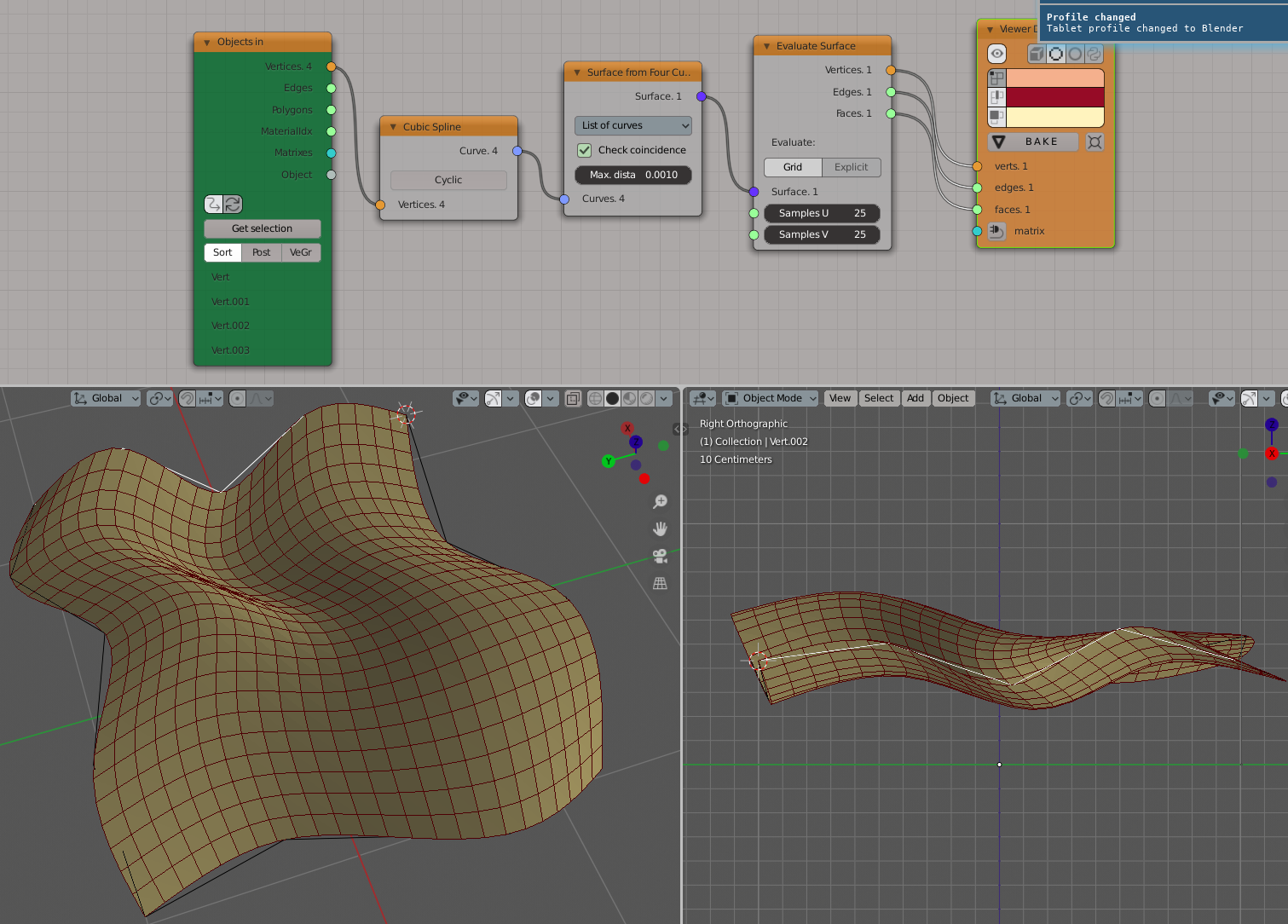
Curves-> Cubic Spline
Surfaces-> Evaluate Surface
Viz-> Viewer Draw
Scene-> Objects In Lite
Similar example with “filleted polylines” as curves instead of cubic splines:
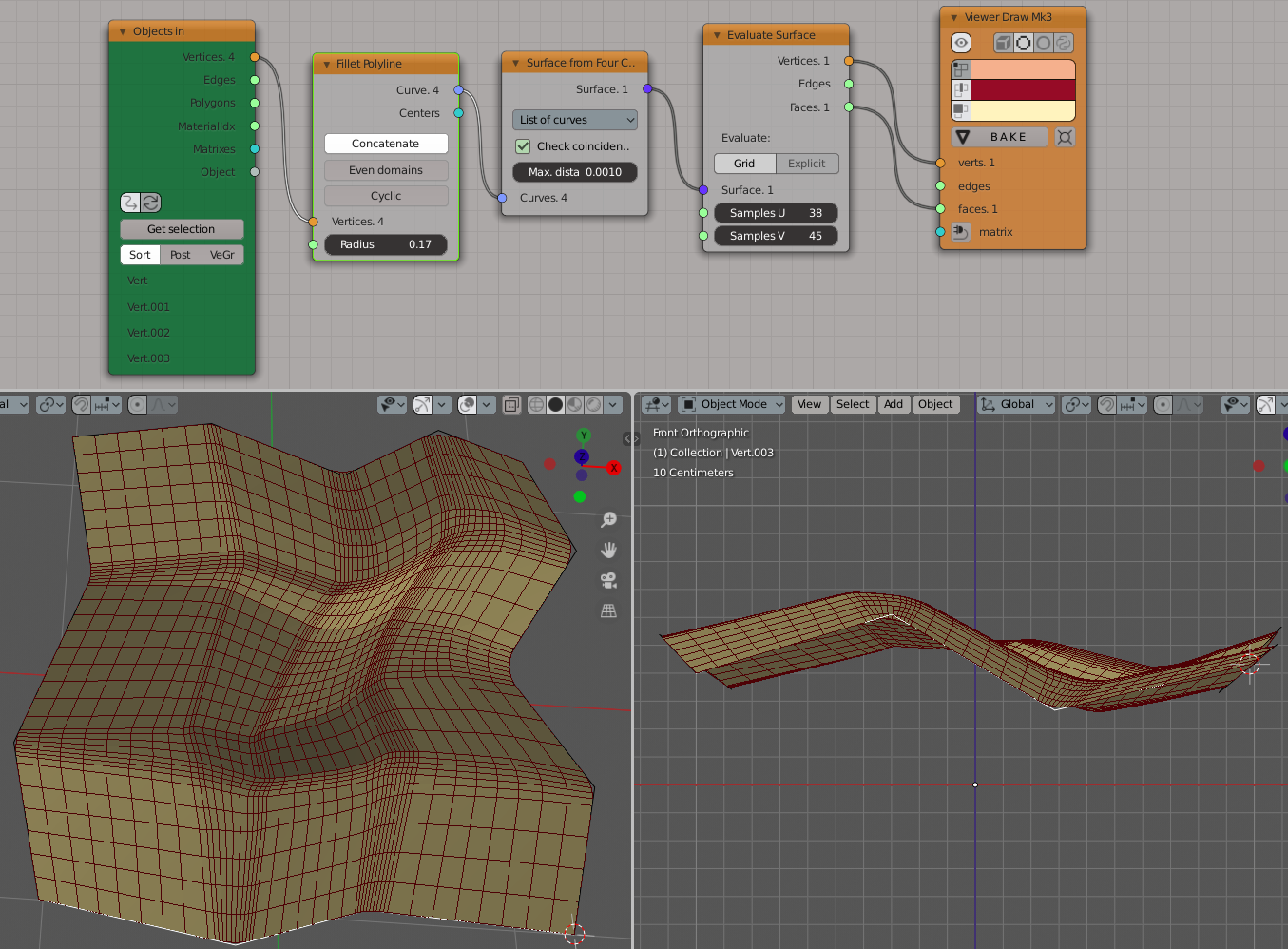
Curves->Curve Primitives-> Fillet Polyline
Surfaces-> Evaluate Surface
Viz-> Viewer Draw
Scene-> Objects In Lite
One may use such surface to generate another topology:
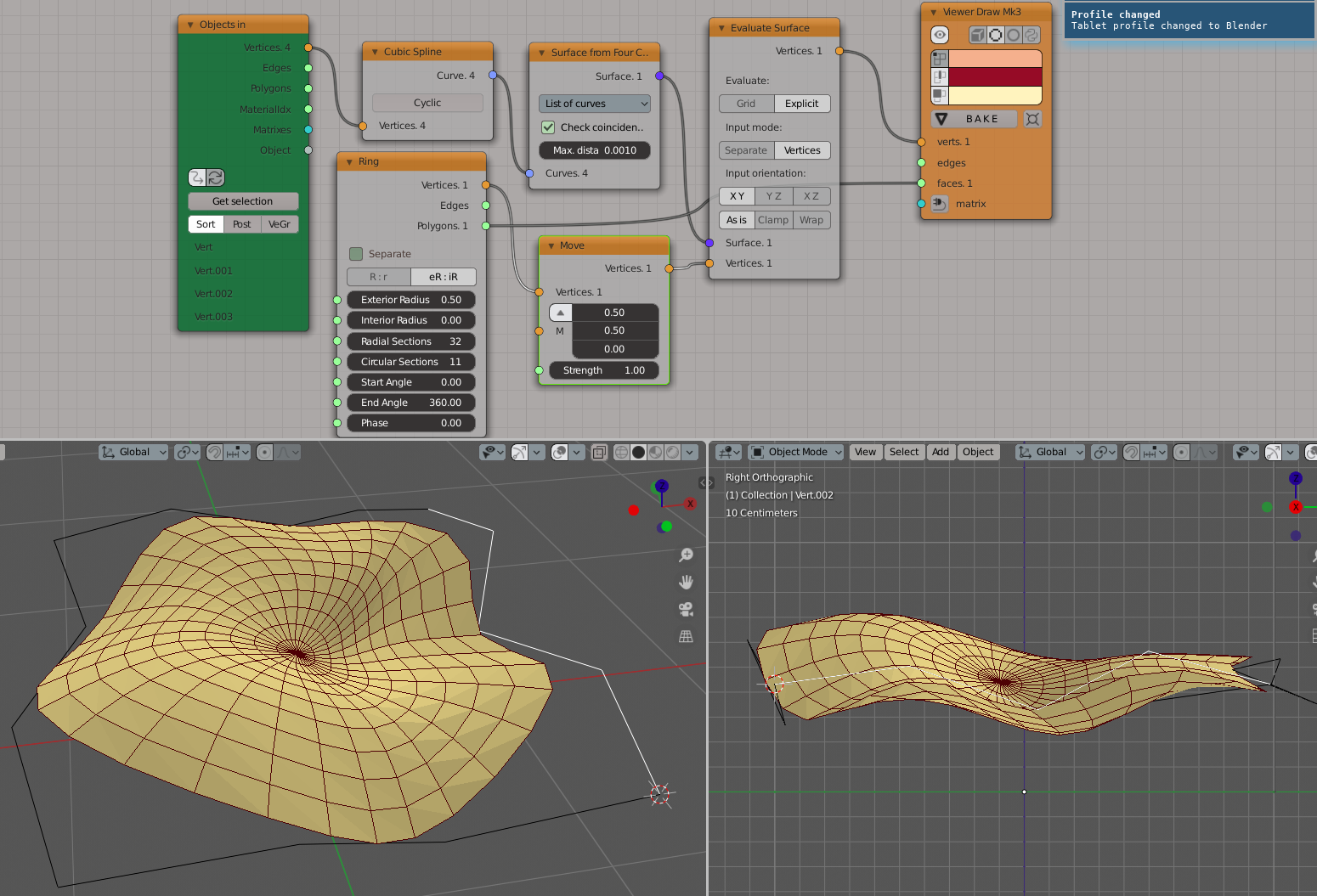
Generator-> Ring
Curves-> Cubic Spline
Surfaces-> Evaluate Surface
Transform-> Move
Viz-> Viewer Draw
Scene-> Objects In Lite
It is possible to use the node together with “Split Curve” node to generate a surface from one closed curve:
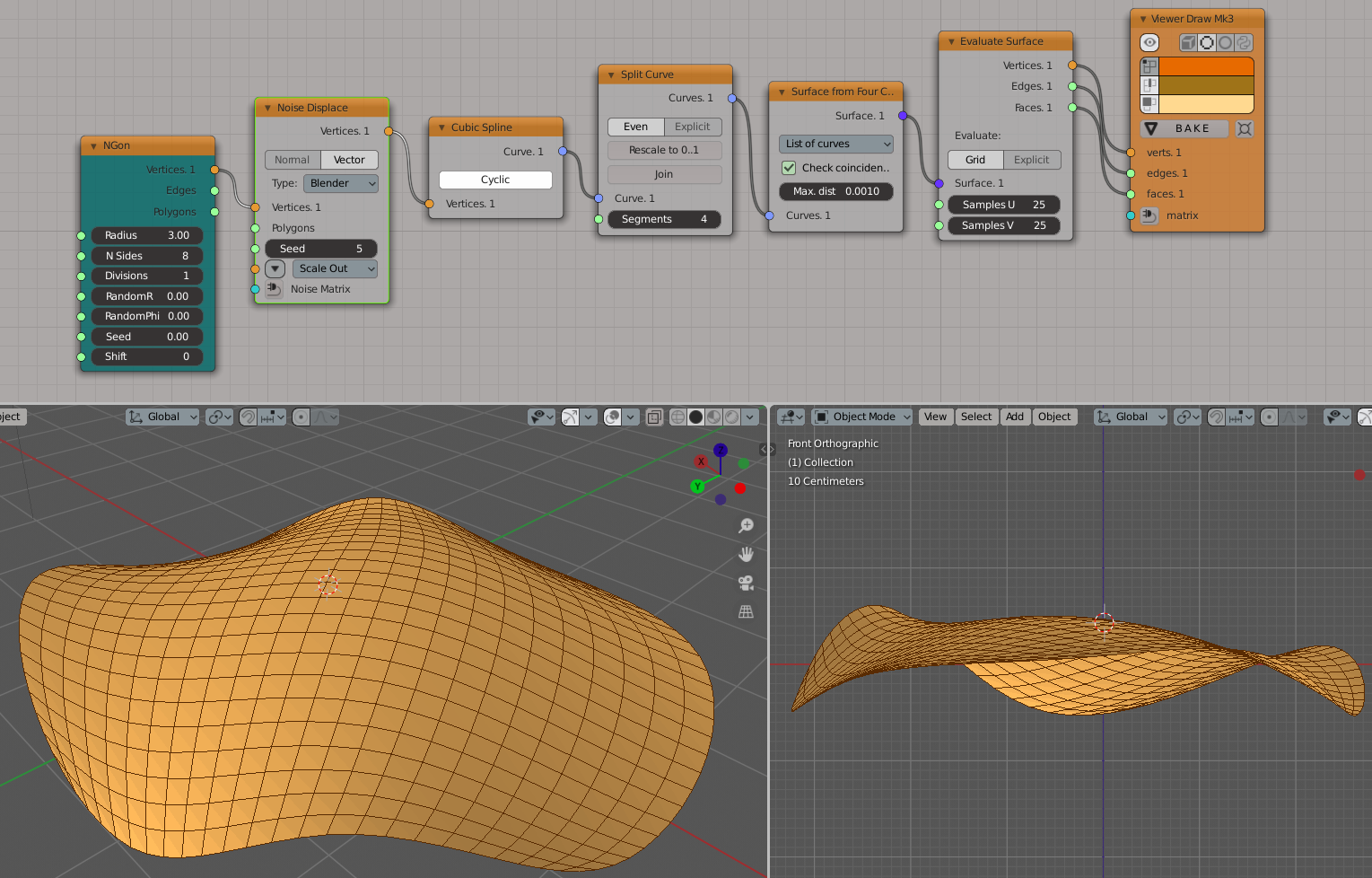
Generator-> NGon
Curves-> Split Curve
Surfaces-> Evaluate Surface
Transform-> Noise Displace
Viz-> Viewer Draw
It is possible to use only three boundary curves:
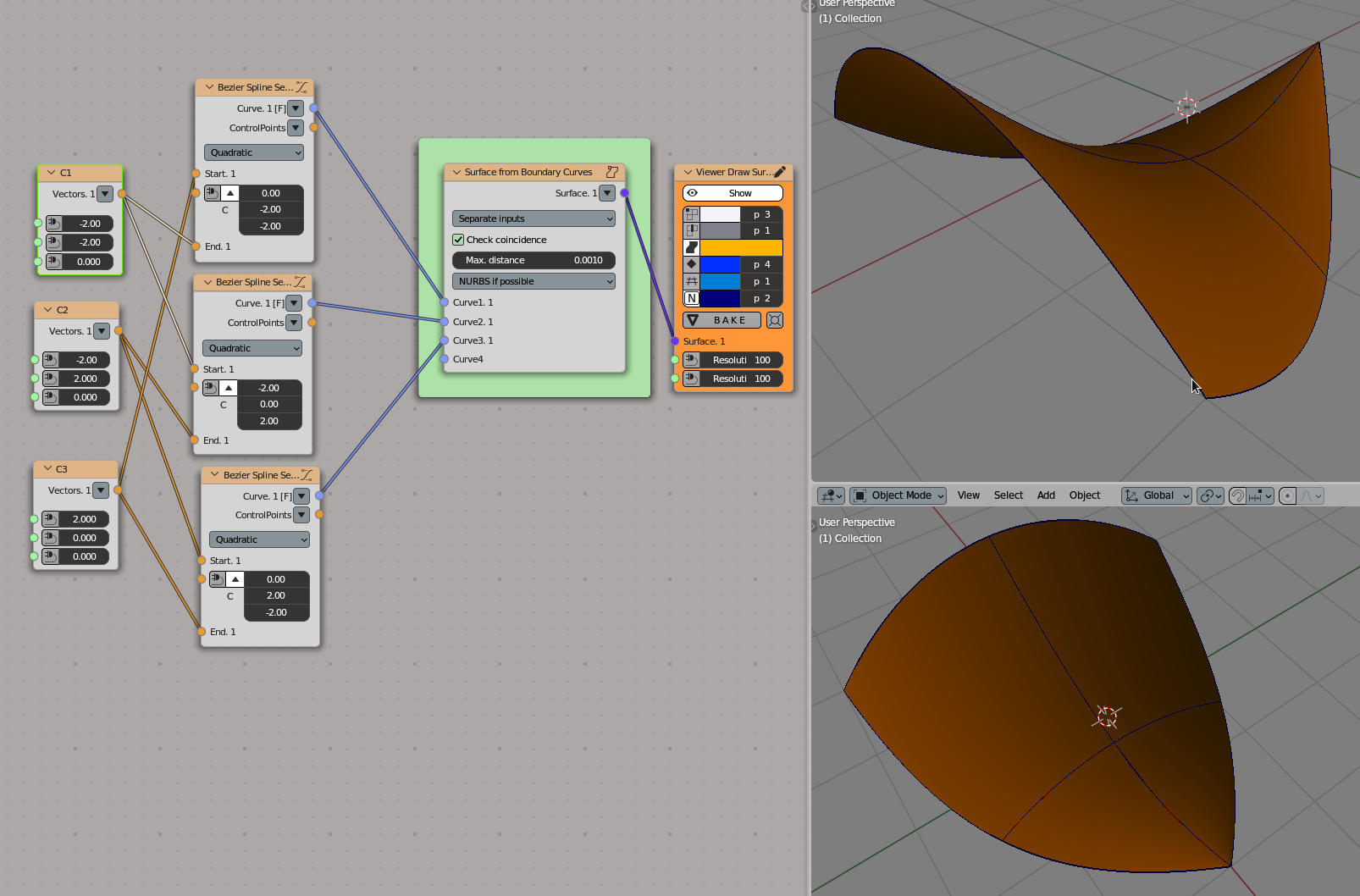
Curves-> Bezier Spline Segment (Curve)
Vector-> Vector In
Viz-> Viewer Draw Surface
If the third curve end does not coincide with the beginning of the first curve, the node will close the cycle with a straight line segment:
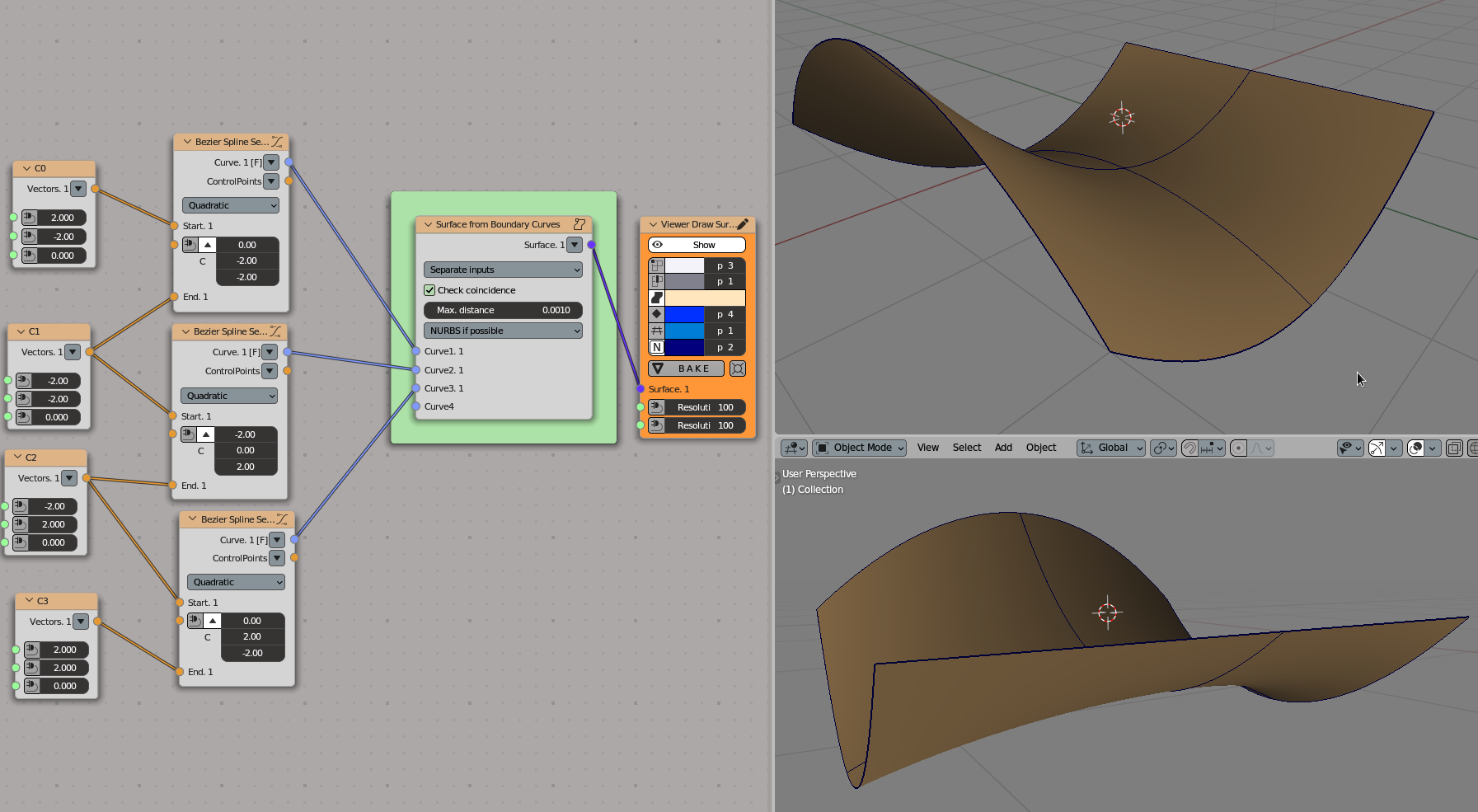
Curves-> Bezier Spline Segment (Curve)
Vector-> Vector In
Viz-> Viewer Draw Surface